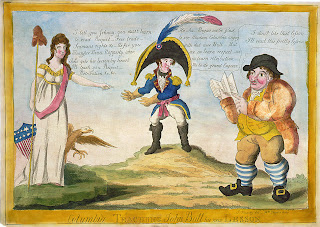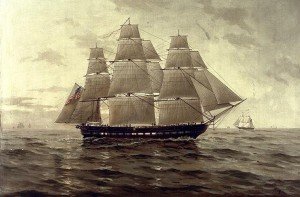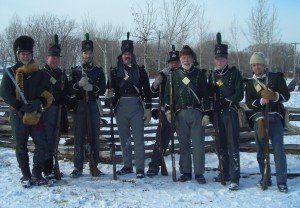
Bob Wells speaks on “The War That Should Not Have Been” as part of the War of 1812 Lecture Series on Monday, September 17, 7 p.m. at the St. Lawrence County Historical Association at the Silas Wright House, 3 East Main St., Canton.
The United States of America, a young nation with a scattered peacetime army of only 12,000 regulars and a comparatively small navy did not let these facts stand in the way of going to war with England in June of 1812. But did the War of 1812 have to happen?
In his program “The War That Should Not Have Been,” Bob Wells will discuss reasons why the war was not inevitable or even particularly popular in New England and Northern New York, including St. Lawrence County. U.S. Justifications for the war, such as the annexation of Canada, the need to quell the hostile Native American tribes supposedly armed by the British, and the need to end the English naval practice of impressments of U.S. sailors could have all been handled differently. Another reason cited for war with England was the U.S. desire to be free to trade with France without the English blockading harbors or seizing merchant ships coming from French ports. This issue was actually settled in favor of the United States just prior to the beginning of the war.
The program will be presented by Bob Wells, who serves on the SLCHA’s War of 1812 Bicentennial Committee and Civil War Sesquicentennial Commission. He is an active member of the association’s Civil War Roundtable. Wells is a former Mayor of the Village of Canton and was a professor for over 34 years at St. Lawrence University. He retired from full-time teaching in 1999 as the emeritus Munsil Professor of Government.
This War of 1812 program is part of the St. Lawrence County Historical Association’s Commemoration of the 200th anniversary of the War of 1812, which was fought from 1812-1815. St. Lawrence County was one of the battlefields of the War of 1812.
The SLCHA Gift Shop is a great way to learn about the War of 1812. Books include Major Battles of the War of 1812 and Famous People of the War of 1812. SLCHA members receive a 10% discount on these books and most other items in the gift shop.
The St. Lawrence County Historical Association at the Silas Wright House is open Tuesday through Saturday noon to 4 p.m., Friday noon to 8 p.m. Admission to the museum is free- admission to the archives is free for members and children, $2.50 for college students, and $5 for the general public. The St. Lawrence County Historical Association is located at 3 E. Main St., Canton. Parking is available in back of the SLCHA, next to the museum’s main entrance.
The St. Lawrence County Historical Association is a membership organization open to anyone interested in St. Lawrence County history. For more information, or to become a member, call the SLCHA at 315-386-8133 or e-mail [email protected]. Exhibits and programs are made possible in part with public funds from the New York State Council on the Arts, a state agency. Visit the SLCHA’s website, www.slcha.org, for more information on St. Lawrence County history
Illustration: Columbia Teaching John Bull his New Lesson from the Library of Congress by William Charles, 1813, a caricature presenting a U.S. view of the War of 1812. On the left, Columbia (the personification of the United States, holding a pole with a liberty cap on it, and with a stars-and-stripes shield behind her) says: ‘I tell you Johnny, you must learn to read Respect —- Free Trade —- Seaman’s Rights &c. —- As for you, Mounseer Beau Napperty, when John gets his lesson by heart, I’ll teach you Respect, Retribution, &c &c.’ In the middle, a short-statured Napoleon says: ‘Ha Ha —- Begar, me be glad to see Madam Columbia angry with dat dere John Bull —- But me no learn respect —- me no learn retribution —- Me be de grand Emperor.’ On the right, John Bull says: ‘I don’t like that lesson, I’ll read this pretty lesson’ (holding a book with ‘Power constitutes Right’, i.e. ‘might makes right’).”
 It’s a phrase most of us use, without knowing much more than it connotes an air of struggle.
It’s a phrase most of us use, without knowing much more than it connotes an air of struggle.







